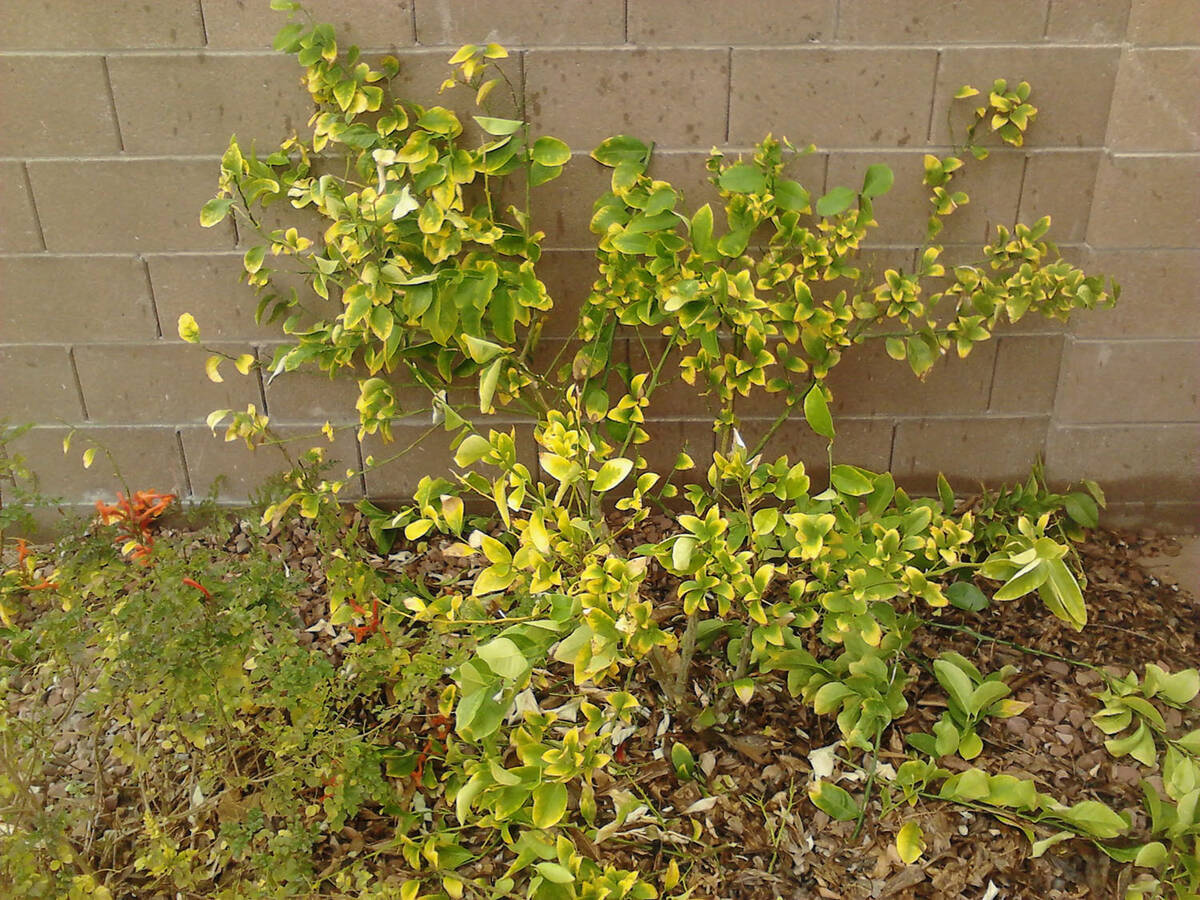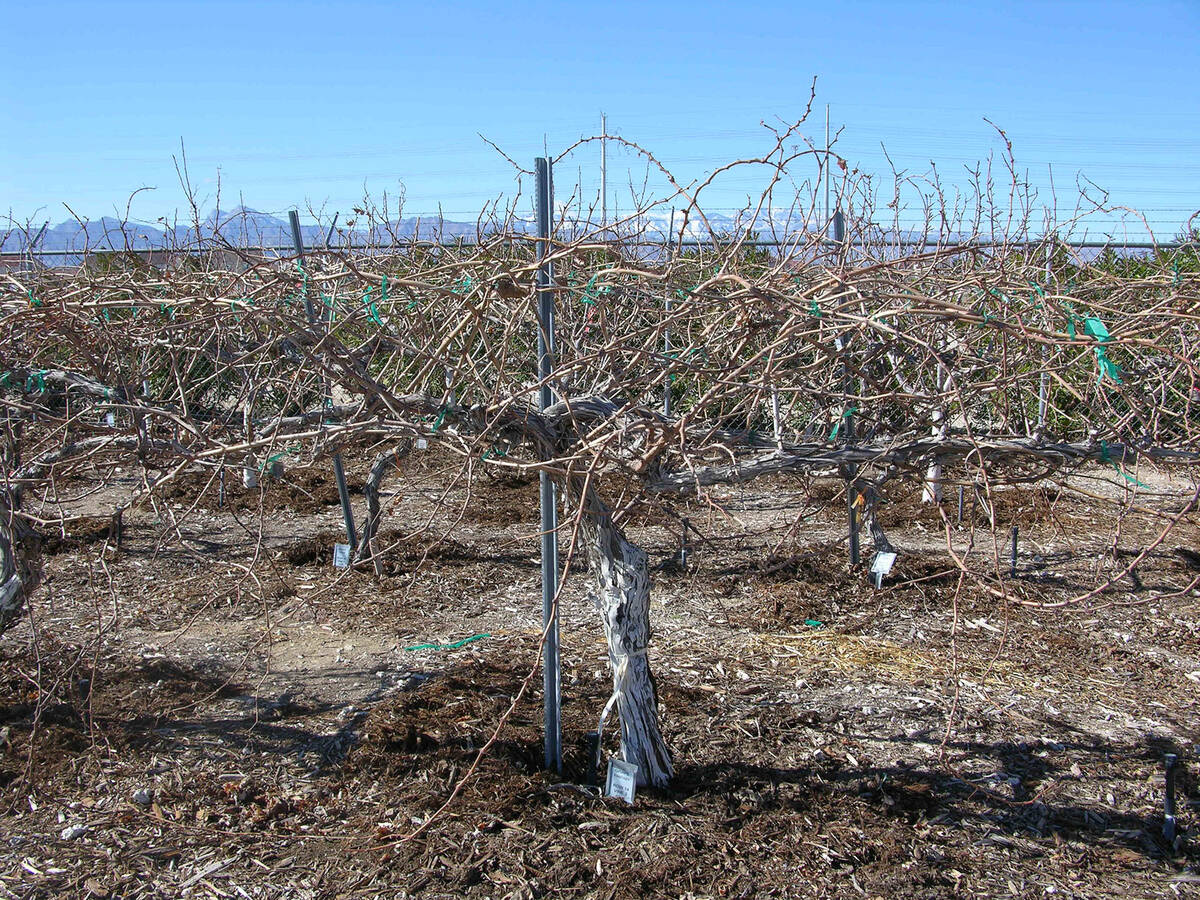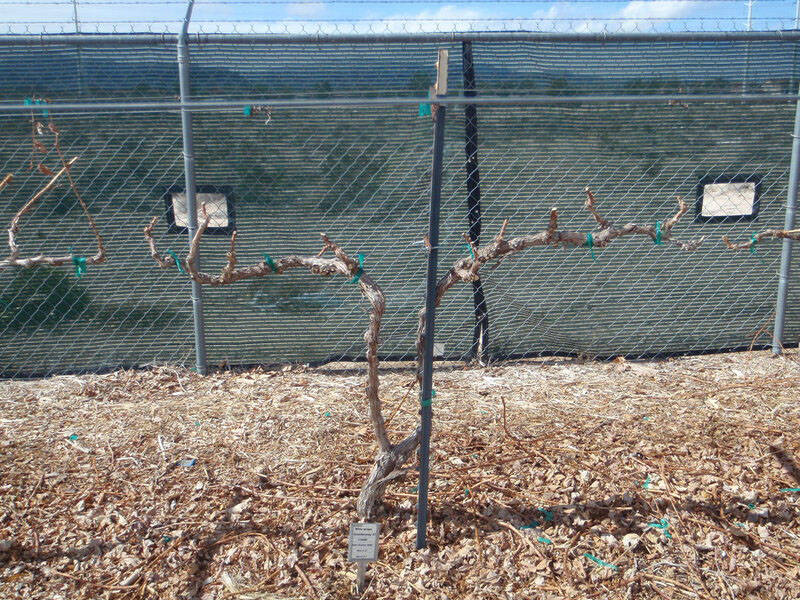Chelated iron fertilizer needs water to work
Q. Do you recommend chelated iron fertilizer for citrus?
A. All the fertilizer for fruit trees (that includes citrus) are applied very early in the season; as early as possible but usually between Feb. 1 and the end of March. A single application of fertilizer is all that’s necessary. If you want to apply a second fertilizer because you have heard differently, then divide your fertilizer application in half and apply half early in the season, February or March, and the other half when you harvest the fruit. But monthly applications of a fertilizer are not necessary for most woody plants.
If you are going to apply an iron fertilizer, it should be in a chelated form. There are several different kinds of chelates used with iron so just mentioning a chelate is not good enough. It’s the kind of chelate that’s important.
All the chelated iron fertilizers work but it depends on the alkalinity or soil pH. The best all-around chelate to use is a chelated iron fertilizer called EDDHA. It is more expensive, so it is not formulated commercially as often. People who know it will use it. Other less expensive chelates are used in iron fertilizers (such as EDTA and DTPA) and they may work but the EDDHA works all the time.
You can apply an iron fertilizer at the same time, and in the same hole, as a regular fertilizer. Just make sure the soil gets wet after an irrigation so the fertilizer moves to the roots.
Q. I have a crepe myrtle in Las Vegas and want to know what fertilizer to use.
A. The problems people have with crepe myrtles growing in our desert soils is usually the yellowing of the leaves and then scorching of these same leaves and eventually branch dieback. This happens either because the homeowner doesn’t know it is an iron problem or they use the wrong product.
A general landscape fertilizer will help push the new growth in the spring and early summer but doesn’t really have much effect on the yellowing of the leaves, their scorching and branch dieback. That’s an iron fertilizer issue. You must use two different products.
I would recommend fertilizing these iron-sensitive trees with a standard fertilizer and an iron chelate fertilizer. The standard fertilizer I would use is a 16-16-16 general landscape fertilizer and use an iron chelate fertilizer. Both of these fertilizers are applied shallow to soils that will get wet after an irrigation. If they are applied to dry soils or soils that stay dry after an irrigation, then you have wasted your money.
Crepe myrtle needs some sort of iron fertilizer applied nearly every year for its leaves to stay green and prevent branch dieback. Yellowing first, followed by branch dieback, will eventually occur if it’s not done. The best iron chelate to apply is a fertilizer called EDDHA. I don’t understand why it’s not used by everyone (maybe because it’s a bit more expensive). It’s cheap insurance if the other iron chelates don’t work.
If the soil is not alkaline, then any iron chelate will work. But if the soil is alkaline, then it’s the only chelate that works. Not to use it is a crap shoot. You can buy it either online or from Viragrow in North Las Vegas (in the past I consulted there and got them going with it).
Most woody plants need one or two applications of an all-around fertilizer in the early spring and no more. One single application of an iron chelate fertilizer in the early spring is all that is needed.
Plants that flower more than once need a general-purpose fertilizer applied about every six to eight weeks while blooming or about two weeks before they flower a second time.
Q. I read your column about fruit and flowers only growing on 2-year-old wood grapevines. So now I am confused about how to prune my beautiful grape vines. Just what do I remove, or do I even need to remove any of the vines?
A. I first would decide how I must prune my grapevine. You have only two possibilities: a spur version (pruning it to less than an inch long) or pruning last year’s growth into an 8-to-10-inch cane. Both decisions are done only to last year’s growth. Both types of pruning are in exactly the same spot, just the spur is much shorter than the cane.
Look for different colored wood. If you find that, then that is probably last year’s growth. If you are comfortable, prune out the old growth that is in the way.
Second, look at the place where the old grape bunches were harvested from last year. By now, that harvested area is crunchy and old, the grapes are long gone. Were these old bunches close to dark wood or several inches away? After reading this and you aren’t sure, it’s better to prune the new growth into the much longer “cane” version and prune shorter when you are certain.
If these old bunches are really close to the old wood (change in color), then the vine needs to be “spur pruned.” If these old bunches are a few to several inches from different colored wood, then choose the “cane pruning” version. If you are not sure, it is safest to pick “cane” version for pruning. You can always prune again later when you are certain and shorten the cane version into a spur.
The reason why grapes are either pruned into a spur or a cane is because of fruit production. If you prune a grape into the spur version and it is a cane type, then you will have little to no fruit produced. If you prune a spur type of grape into a cane, then you will have lots of fruit, but the individual berries will be small.
Once the berries are about the size of baby peas, the vine will be “thinned” so the individual berries get larger. Don’t wait too long or the individual berries will be too old to thin, and they will not get a lot bigger.
Q. I was stunned to notice this morning dead branches on my Texas sage. This plant has been in the back corner of my yard since 2001. I have had them on an automatic irrigation system.
A. My guess is that the dead branches resulted because the soil became too wet over time because of poor drainage. The first sign of root rot is branch dieback. Shrubs that could handle poorly drained soils survive with no branch dieback.
Texas sage is from the Chihuahuan desert of Mexico and grows into southwestern Texas, also part of the Chihuahuan desert. Oftentimes shrubs that grow successfully in desert climates and desert soils can’t handle wetter and poorly drained soils. They can’t survive lawns for instance. The soil drainage becomes poorer as the soil contains fewer and fewer organics.
When Texas sage was first planted the soil was amended with planting mix. The soil drained well due to the organics in the planting hole. After planting, the soil was then covered with rock. After planting the plant grew by leaps and bounds. Over a period of years this organic planting mix disappeared. The minerals from the rock mulch replaced the organic planting mix and the planting hole slowly changed over to minerals. The soil around the established roots slowly collapsed from a lack of organics. But the watering continued.
The irrigation system watered the same regardless. Plants that could tolerate wet, poorly drained soils survived. Plants that could not tolerate wet, poorly drained soils slowly died. This type of plant death happens particularly during the heat of summer.
What to do? Reduce the frequency of watering. Subtract one day in the watering frequency, particularly during the summer, but keep the minutes the same. I think other plants will start to be affected but let’s see.
Bob Morris is a horticulture expert and professor emeritus of the University of Nevada, Las Vegas. Visit his blog at xtremehorticulture.blogspot.com. Send questions to Extremehort@aol.com.











